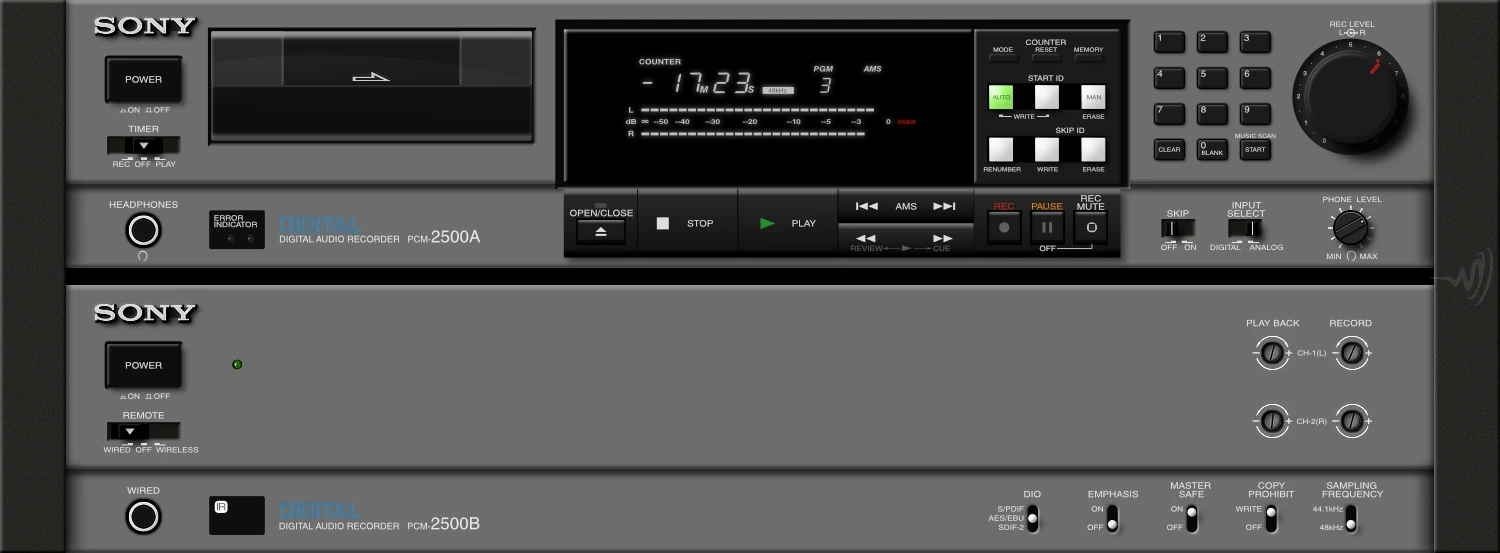By the late 1980s Sony introduced the DAT (Digital Audio Tape) format to the world (1987), as a consumer digital recorder set to replace our trusty old analogue cassette recorders. Their first offering was the Sony DTC-1000ES. It was built like a tank in what was Sony ES tradition in the 80s, complete with copper chassis and quality power supplies to feed the analogue and digital circuits. While the DAT format failed to find a home in the consumer market in any significant way, it took off big time in the professional audio world where it became the two channel mastering format of choice, replacing the Sony PCM-1630/Sony DMR-4000 combo recording system.
Sony’s first professional DAT recorder, the Sony PCM-2500 Digital Recorder was heavily based on the consumer DTC-1000ES, in fact it was the exact same chassis and specifications, with an additional box thrown in to offer more professional features including balanced XLR inputs and outputs. Being based on the consumer Sony DTC-1000ES wasn’t a bad thing as the machine was in my view the best made DAT of all, every machine that came after it felt less solidly built and the transports of machines built to a price started to eat the tapes, thus ending DAT’s dominance not only for consumers but also the professional engineer in studios the world over.

- Digital audio equipment having the AES/EBU standard 1/0 connectors
- Digital audio equipment having the SDIF-2 (Sony digital interface 2 format) 1/0 connectors
- Digital audio equipment having the Sony-Philips digital format I/O connectors
- Analog audio equipment having XLR-3-31 type analog input connector and XLR-3-32 type analog output connector
Excellent sound quality
For superior performance and higher fidelity in the Sony PCM-2500, the four times oversampling digital filter and D/A converter unit are employed for the left and right channels independently.
High-speed search operation using sub codes
Three types of sub codes, Start ‘D, program number and skip ID, can be written into the sub code area. By referring to the start or program numbers, a desired selection can be located at high speed or searched for directly. The skip ID is used to skip over any unwanted portion of the tape during playback.
Two sampling frequencies selectable
Sampling frequencies can be selected between 48 kHz and 44.1 kHz when recording analog source material.
Emphasis circuitry
When the built-in emphasis circuit is activated for analog source material, the signal-to-noise ratio of high frequencies is improved by raising their recording level and lowering their playback level.
Digital dubbing With no deterioration
When the equipment is connected to another digital tape recorder, sound can be dubbed digitally With no deterioration.






One Response
Had two of these, one i traded for a Roland D-50 Synth. I still have one. (love it)